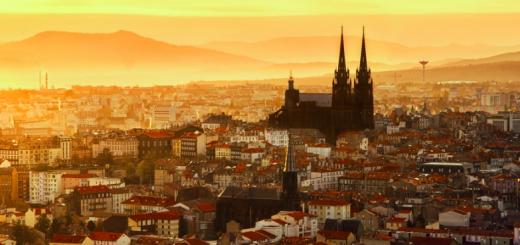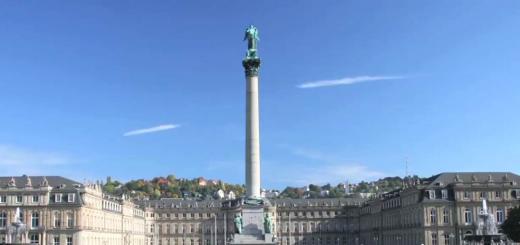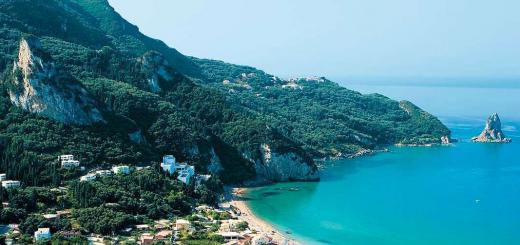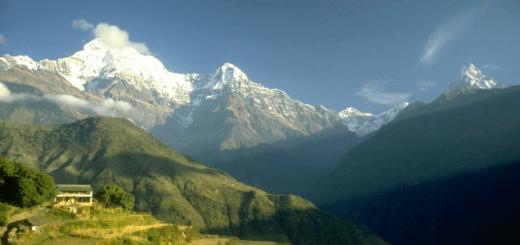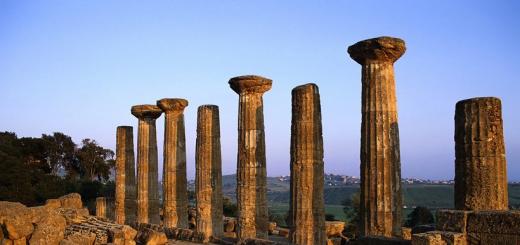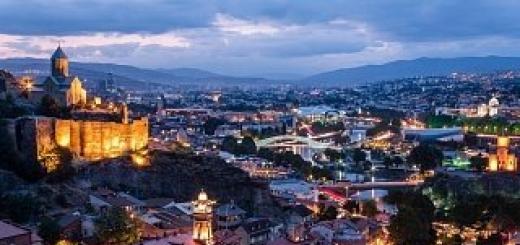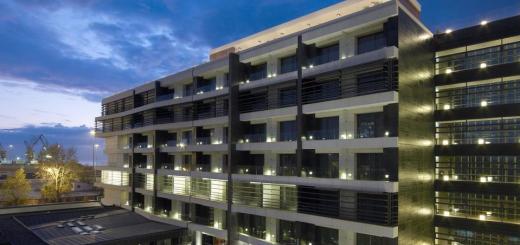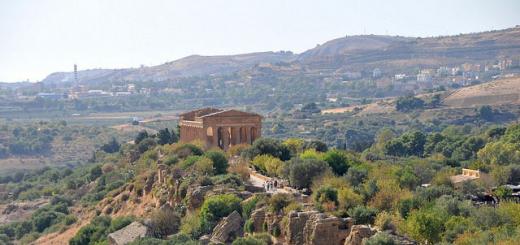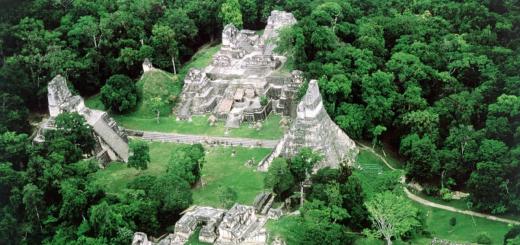As you know, Indonesia is located in the Pacific Ring of Fire, on a conditional line thousands of kilometers long, where the Indo-Australian and Eurasian lithospheric plates collide. It is to this complex geological process that every volcano in Indonesia owes its appearance.
There are interesting statistics that show that Indonesia is the world leader in many aspects of volcanic activity. This region has the largest number of active volcanoes, and ranks second after Japan in terms of the number of confirmed eruptions. The high population density in the country has led to the fact that Indonesia leads in the number of eruptions that lead to human casualties. The most terrible and destructive happened at the end of the 19th century, when the eruption of the raging Krakatoa volcano and the tsunami caused by it led to the death of about 36 thousand people, 295 cities and villages were washed into the sea, many of them were destroyed by a shock wave that knocked down even before the tsunami approached. equatorial forests on the coast of the Sunda Strait and tore roofs off houses in Jakarta, 150 kilometers from the crash site. The consequences of the eruption were felt to one degree or another in all regions of the globe. And today, Indonesian volcanoes often produce “noise effects” and throw ash columns and portions of lava to the surface.
The well-known expression “they live like on a volcano” can literally be applied to the Indonesians. But in order to understand what it is like to live in the country of volcanoes, you need to see this miracle with your own eyes at least once, I thought, and came to grips with organizing our trip to Indonesia with a mandatory visit to active volcanoes.
The fear of volcanoes is not in the first place in the list of my fears, the palm of primacy has long and thoroughly been given to the tsunami, but still, a slight chill from the upcoming meeting with the fire-breathing mountains was felt. And I really hoped that during our visit all the monsters would sleep peacefully. But two volcanoes still added fuel to the fire of my experiences. On May 24, the Merapi volcano erupted, which is located 30 kilometers from Yogyakarta on the island of Java, photos and videos with a huge column of ash flew around all the world's media, due to increased danger, the city's airport was closed for some time. And on July 2, Agung became more active on the island of Bali, the local population from the adjacent territories was evacuated, the zone within a radius of 4 kilometers was closed to the public. On July 6, we set foot on Indonesian soil at the Denpasar airport.
The first volcano that we saw is located in the northeast of Bali - this is a volcano Gunung Batur or just Batur. The volcano is easily accessible in about 40 minutes from the popular town of Ubud. Batur is an active volcano, in which tremors occur from time to time. The largest emission over the past decade was recorded in 1999-2000, when the ash column reached more than 300 meters in height. In June 2011, residents of the villages located at the foot could observe a small activity of the volcano.
Mount Sinabung has erupted on the Indonesian island of Sumatra. The island declared the highest level of danger and began an emergency evacuation of tourists and residents.
It is reported by the Associated Press.
Thousands of residents and tourists have become hostages in the resorts of Indonesia because of the new eruption of Mount Sinabung.
In the photo and video that appeared on the network, you can see how a column of volcanic ash rose from the crater to a height of more than 5 thousand meters. Experts have already reported that this eruption will significantly complicate aviation flights. It is expected that in the future the cloud will move in a southerly direction. The Indonesian National Disaster Management Agency, in turn, reported that clouds of hot ash spread 4.9 thousand meters to the south.
According to rescuers, there are no victims or injured as a result of the eruption. During the emergency evacuation, nearly 3,000 residents left their homes.
Volcanic eruption in Indonesia

On the island of Sumatra, a 5-kilometer column of smoke and dust rose into the sky

Emergency evacuation of people on the island of Sumatra

Volcano erupts in Indonesia, emergency evacuation begins
The Australian agency responsible for observing volcanic ash in the region, for its part, declared a "red level" of danger to airlines.
What is happening on the island of Sumatra, see the video.
Note that Sinabung is just one of more than 120 active volcanoes in Indonesia. For several centuries, he was considered dead, but again began to operate in 2010. In early 2014, the Sinabunga eruption led to the death of at least 16 people.
Volcanoes are the creations of mother nature, which attract with their beauty and at the same time conceal a huge danger for humanity and all life on our planet. Some people see them only in pictures, while others practically live next to them. One of the states in which there is a huge number of volcanoes is Indonesia.
Getting to know the country
Many Russians who actively use tourism services have traveled to Indonesia. If people who once visited here are asked about what this country is like, then many will start talking about Bali. It is with this island that travelers associate Indonesia. In fact, the named state is not only the island of Bali. This is more than 17 thousand small islands.
It so happened that Bali is the most popular island in Indonesia in terms of tourism. It attracts travelers with an interesting history and temples preserved from ancient times, with its amazing landscapes, tropical forests, and endless beaches. The island is also known for its impressive volcanoes. By the way, Indonesia is famous for these natural attractions. Currently, the country is the leader in the number of active volcanoes (78), in the number of eruptions that led to human casualties (114).
Kelimutu
Some volcanoes in Indonesia deserve special consideration. One of them is Kelimutu. It is located on the island of Flores. Its last activity was recorded in 1968, which means that the last eruption occurred half a century ago. Now Kelimutu is a popular tourist attraction, a real miracle of nature.
What affects the volcano on the island of Flores? Its amazing sights are 3 lakes. Nature has transformed the volcano in 50 years. Lakes with a depth of about 1650 m were formed in its collapsed peaks. One lake has a dazzling turquoise hue, while the rest are emerald green and brownish red, sometimes black.

Legends related to Kelimutu
The inhabitants of the island of Flores formed mystical beliefs in relation to the volcano. People believe that the lakes are the other world, and each of them was formed for certain dead people. The turquoise lake is intended for young and innocent souls, the emerald green lake is for those who died at an advanced age and lived their lives with dignity, and the brownish-red lake is for sinners who did bad deeds, killed people, living beings.
The lakes of the Kelimutu volcano are separated by thin barriers. Residents who believe in an afterlife are sure that the walls were formed for a reason. They point out to people that there is a very thin and fragile line between good and evil. A person who destroys it during his lifetime by his atrocities or wrong deeds, in the end dooms his soul after death to exist in the darkness among the villains.
Sinabung
One of the famous volcanoes in Indonesia is located in the northern part of the island of Sumatra. Its name is Sinabung. This is an active volcano, which has been periodically awakening lately and inspires horror and panic in the inhabitants of the island. Its first sudden eruption began in August 2010. Until that moment, the volcano had been dormant for more than 4 centuries.
The following eruptions were recorded every year. The victims were reported in the media in February 2014. During another eruption, a local television journalist, members of the Indonesian Christian student movement GMKI, died. They wrote in the media about 4 children. The students came with their school teacher to see the eruption up close. Unfortunately, their educational trip to the Sinabung volcano in Indonesia ended tragically.

Volcanoes of Java
Perhaps the second most visited place after Bali is the Indonesian island of Java. Tourists either choose it as the main goal of their trip, or visit it after excursions around Bali. Java Island attracts with its natural attractions. Among them, the Bromo-Tengger-Semeru National Park can be distinguished. It attracts travelers with its dangerous romance, because volcanoes such as Semeru, Kursi, Bromo, Batok are located on it.
Of these volcanoes, Bromo is attractive to tourists because it is the most photogenic. It is an active volcano in Indonesia. Periodically erupting clouds of smoke and sulfur create an amazing sight that travelers want to capture on camera.

Ijen
Considering the island of Java, it is impossible not to mention the Ijen volcano. It is located in the National Park of the same name. The volcano is interesting in that an apple-greenish lake has formed in its caldera. This place is sometimes called hellish. There are several reasons. First, the lake is hot. On its surface, the temperature is about 60 degrees. At depth it is higher. The temperature there is over 200 degrees.
The shores of the lake, which belongs to the Ijen volcano in Indonesia, are especially unusual. Sulphurous rollers are cast on them with gold. Local residents here are engaged in the extraction of sulfur. They work in inhuman conditions, because the air contains harmful gases and vapors. People work in masks, and without it there are acute coughing fits.

Tambora
Of the Indonesian volcanoes, Tambora entered history. It is located on the island of Sumbawa. The most powerful eruption that mankind has seen in its lifetime is associated with this creation of nature. A tragic event took place in 1815. Up to this point, the volcano had not erupted for several centuries. In 1815, the total volume of lava and ash was 150-180 km3.
At the time of the eruption, there was a strong explosion. It was even heard by the inhabitants of the island of Sumatra, located 2 thousand km away. The entire territory, located at a distance of 600 km, plunged into darkness after the volcanic eruption in Indonesia. According to rough estimates, a terrible natural phenomenon claimed the lives of 12 thousand people. About 60 thousand people later died of starvation, diseases that became the result of a powerful eruption.

Tambora today
After 1815, several small eruptions were recorded, but they were not so large-scale and tragic. Currently, the volcano continues to be considered active. He is being closely monitored, because such a colossal number of victims can no longer be allowed.
Now, according to experts, this powerful volcano in Indonesia does not pose a danger to local residents. But, despite this, a special plan for the prevention and elimination of emergency situations has been developed. According to him, the nearby territory was divided into 2 zones. One of them is considered dangerous. During an eruption in this territory, everything will be destroyed by lava and ash. It is now forbidden for people to live in the danger zone. Another part of the nearby territory is a zone of increased attention. It may be indirectly affected by the eruption in the future. Local residents are allowed to live in this area. Now there are several settlements on it.

Each volcano in Indonesia is interesting in its own way. Travelers who go to this country for vivid impressions and unusual memories should visit at least one of them. Some volcanoes, as mentioned above, beckon with their dangerous romance, the second ones attract with mystical legends, and the third ones arouse interest in connection with large eruptions that occurred in the distant past.
Indonesia includes an island with an area of about 130,000 square kilometers. Almost a third of it is jungle. The island of Java is famous for the fact that there are volcanoes on its territory, the total number of which is 120. At the same time, 30 of them are active.
Java is one of the largest islands in Indonesia, and the country's capital is also located on it. But not all tourists know and visit this island, because the famous and popular now Bali is located very close to it. And although the island of Java is much less suitable for tourism, unlike Bali, it should still be visited. At least even because of the very 120 volcanoes that are on the island. And even if you can’t see everything, you can choose and visit at least the most interesting ones.

One of these volcanoes is Ijen. Firstly, it is interesting because its crater is filled with a turquoise sulfur lake. In this volcano, locals mine sulfur in an open way. Workers who carry baskets with heavy lumps of sulfur can be seen here almost constantly. You can even offer them your help and try to lift a weight of 50-60 kilograms to the top of the volcano. And this volcano is also famous for its unusual bluish glow. The fact is that sulfur dioxide still continues to come to the surface in some areas and ignites. Since you can look at this phenomenon only at night, that's when the bulk of tourists come here.

The next volcanoes of the island of Java, which are also worth a visit, is the whole Tengger volcanic complex. It consists of three volcanoes, which are the hallmark of the entire island of Java. In order to admire the breathtaking views of the Tengger volcanoes, there is even a special observation deck. From it you can see landscapes that can be called cosmic rather than earthly. All volcanoes of the complex are active. Those who want to tickle their nerves can climb one of them called Bromo and look into the crater, from where steam constantly rises.

There is another active volcano on the island of Java, which is called Merapi. It is located in the central part of the island near the country's capital - Jogyarta. This volcano is one of the most active volcanoes in all of Indonesia. Every year, twice a year, small eruptions occur here. But there are also quite large eruptions, because of which even local residents are evacuated. The last such eruption was recorded in 2010, when several hundred thousand locals were taken out. Seeing the very top of the volcano is not an easy task, as it is often hidden in thick clouds.

The most easily accessible volcano for tourists is also located in the center of the island and is called Tangkuban Perahu. You can drive directly to its top by car on an asphalt road. Therefore, here, of course, there are always the most tourists. But thanks to this, there are also many cafes, tourist souvenir shops. There is also a specially equipped observation deck from which you can admire two volcano craters at once.
In addition to volcanoes, there are many other interesting sights on the island of Java that will also interest and surprise travelers. So, for example, here is Borobudur - a Buddhist architectural and sculptural religious building, built between 750 and 850 years. For hundreds of years, Borobudur was covered with a thick layer of volcanic ash. Scientists agree that the locals had to leave because of the volcanic eruption.

And it was on this Indonesian island that the remains of Pithecanthropus and Javanthropus were found. The first is also called ape-man, this is a fossil subspecies of people who were once considered an intermediate stage between Australopithecus and Neanderthals. Javanthropus is another fossil human from Indonesia.
There are 78 dormant volcanoes that are part of the Pacific Ring of Fire. It was formed at the junction of two Indo-Australian and Eurasian lithospheric plates. Today this area is the most volcanically active in the world. It recorded 1250 eruptions, 119 of which led to human casualties.
Major Indonesian VolcanoesThe list of the most popular volcanoes among tourists in Indonesia is as follows:
- . The height is 1640 m. It is located on the captivating beauty of its lakes. The volcano is part of Kelimutu. At the top of the mountain there is not one, but three lakes at once, which differ in size, color and composition. Climbing to the top of the Kelimutu volcano in Indonesia, you will see red, green and blue-black pools, the hues of which will change throughout the day depending on the lighting and weather.
- . Height 2400 m. This volcano is famous for its blue lava and the largest acid lake in the world. People from all over the world come here to see an incredible spectacle - a spill of shining lava and lightning, striking from the ground 5 m in height. The crater of the volcano is filled with a deep lake, in which sulfuric and hydrochloric acid splashes instead of water. Its attractive emerald color is very dangerous. It is not safe to come close to the lake, and also to be in the crater of the Ijen volcano in Indonesia without special respirators that protect against sulfur vapors.
- in Indonesia. Located in the east of the island of Java, it is incredibly beautiful and attracts many tourists with its grandeur. They climb to a height of 2330 m to meet the dawn and admire unreal volcanic views. The slopes are covered with lush greenery, but the higher you go to the top, the more futuristic the landscape becomes. Black sand dunes, low-hanging clouds of smoke make an indelible impression on travelers.
- Mount Sinabung. Altitude 2450 m. Located in the north. For a long time, the volcano was considered dormant, but since 2010 and to this day, it erupts every 3 years, which leads to numerous destruction and evacuation of residents. Recently, he has increased his activity and worries residents every year. In May 2017, it again began emitting ash so strong that it was closed to tourists indefinitely. Now you can’t drive up to the Sinabung volcano in Indonesia closer than 7 km, and people from local villages were taken to a safe distance.
- Volcano Lucy in Indonesia - this is the largest mud volcano located on the island of Java in a place. It appeared artificially in the process of natural gas production, while drilling wells. From under the ground in 2006 began to rise under the pressure of gas streams of mud. The neighborhood was quickly flooded with strong mudflows. All attempts by geologists working on drilling to stop the release of mud, water and steam were unsuccessful. Not even stone balls lowered into the crater in large quantities helped. The eruptions peaked in 2008, when Lucy ejected 180 thousand cubic meters daily. m of dirt, which led to the evacuation of local residents. To date, it has collapsed under its own weight and has temporarily subsided.
- in Indonesia. Height 2970 m. One of the most frequently awakening volcanoes of the island of Java, last erupted in 2014. The Indonesians call it the "mountain of fire", which speaks of its unceasing activity for many centuries. Recording eruptions began in 1548, and since then small emissions occur twice a year, and strong ones once every 7 years.
- . Notorious for the most powerful eruption in world history. Once upon a time, a dormant volcano was located on a volcanic island in the Lesser Sunda Islands group. In May 1883, he woke up and threw a column of ash and flame 70 km high into the sky. Unable to withstand the pressure, the mountain exploded, hitting the space with fragments of rock at a distance of 500 km. The shock wave in the capital demolished some buildings, many roofs, windows and doors. The tsunami rose to 30 m, and the shock wave managed to circle the entire earth 7 times. Today it is a low mountain 813 m above sea level, which grows every year and gains its activity again. After the latest measurements, it is forbidden to approach the Krakatoa volcano in Indonesia closer than 1500 m.
- . Altitude 2850 m. Located in the group of the Lesser Sunda Islands. The last recorded eruption was in 1967, but the most famous was 1815, which has been called "the year without summer". On April 10, the awakened Tambora volcano in Indonesia shot a flame to a height of 30 m, ash and sulfur vapor entered the stratosphere, which caused a serious climate change, which was called the Little Ice Age.
- . Height 3675 m, this is the highest point of the island of Java. The name was given by the locals in honor of the Hindu god Semeru, they often speak of him as "Mahameru", which means "Big Mountain". Climbing this volcano will require you to be physically active and will take at least 2 days. It is suitable for experienced and confident tourists. From the top there are breathtaking views of the island, living green and lifeless Martian valleys that have been scorched by eruptions. The volcano is quite active and constantly emits clouds of smoke and ash.
- . The largest volcano, 3800 m above sea level, is located in Indonesia on the island of Sumatra, in the national park. At its foot live the famous Sumatran tigers and Javanese rhinos. At the top of the crater is a high-altitude volcanic lake, which is considered the highest among the lakes of Southeast Asia.
- . A favorite of travelers who appreciate beauty. Tourists come here specifically to meet the dawn and admire the amazing landscape of the beautiful island. The height of the volcano is only 1700 m, the ascent is simple, accessible even to unprepared people. In addition to tourists, the Balinese themselves often climb the volcano. They believe that the gods live on the mountain, and before the start of the ascent they pray to them and perform rituals and offerings.











